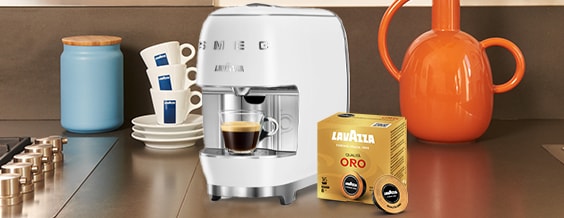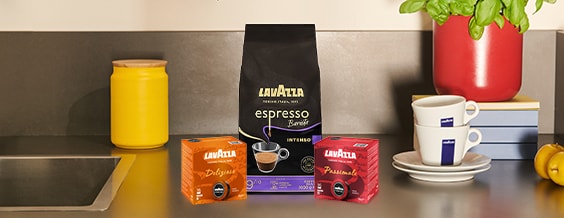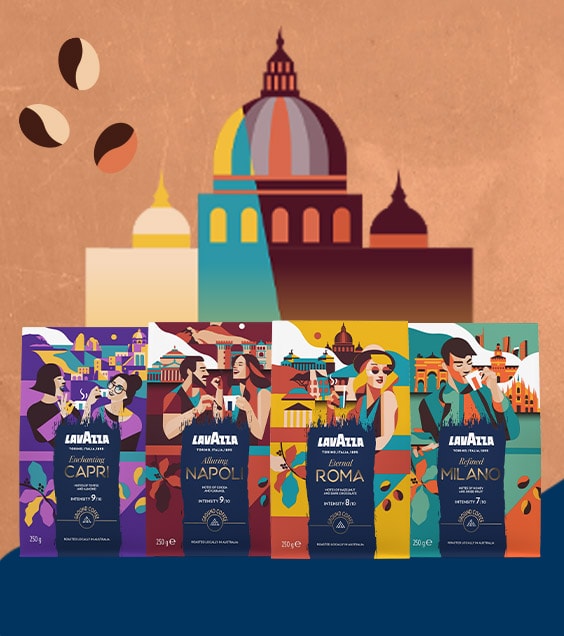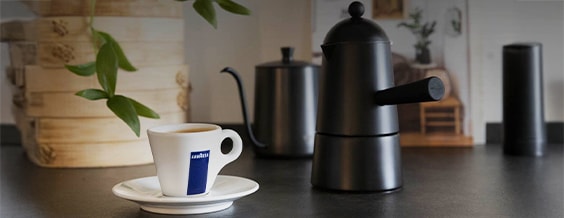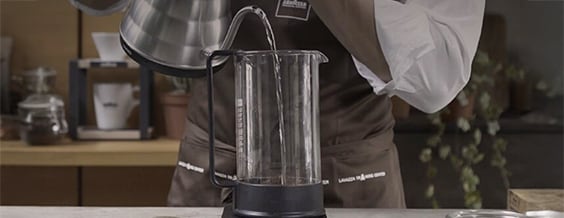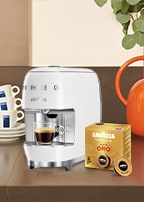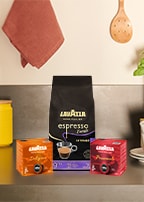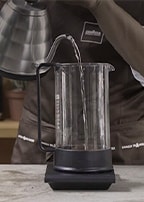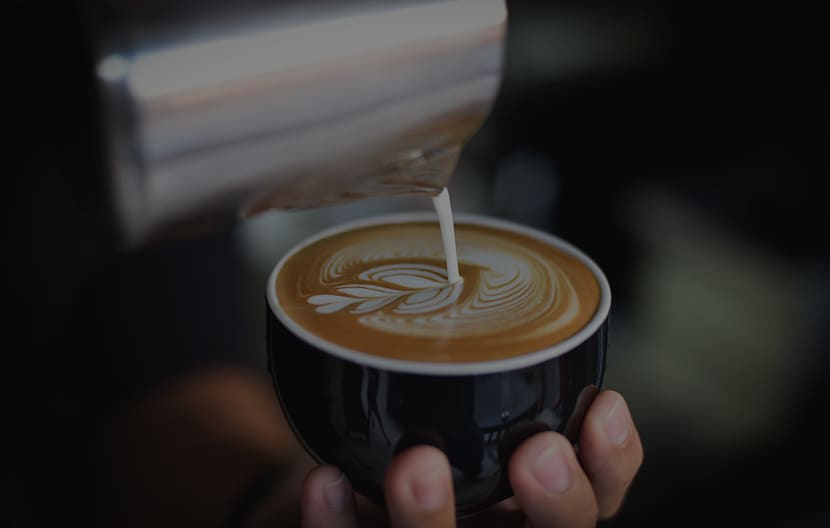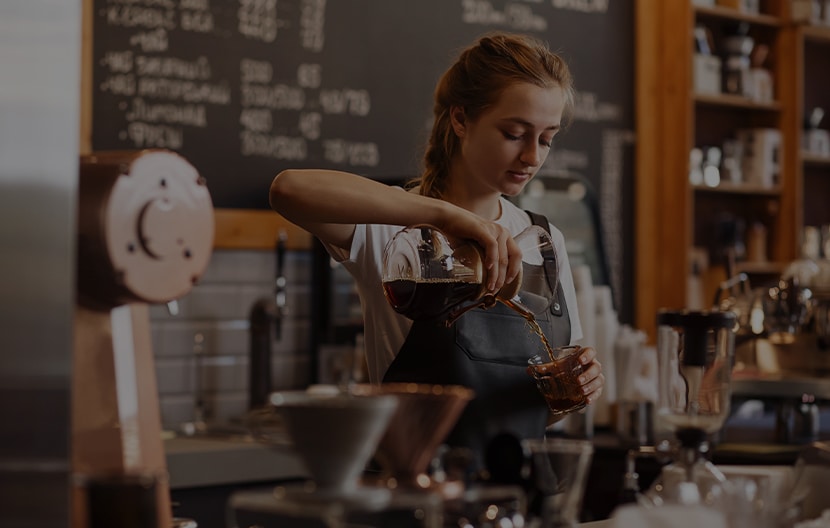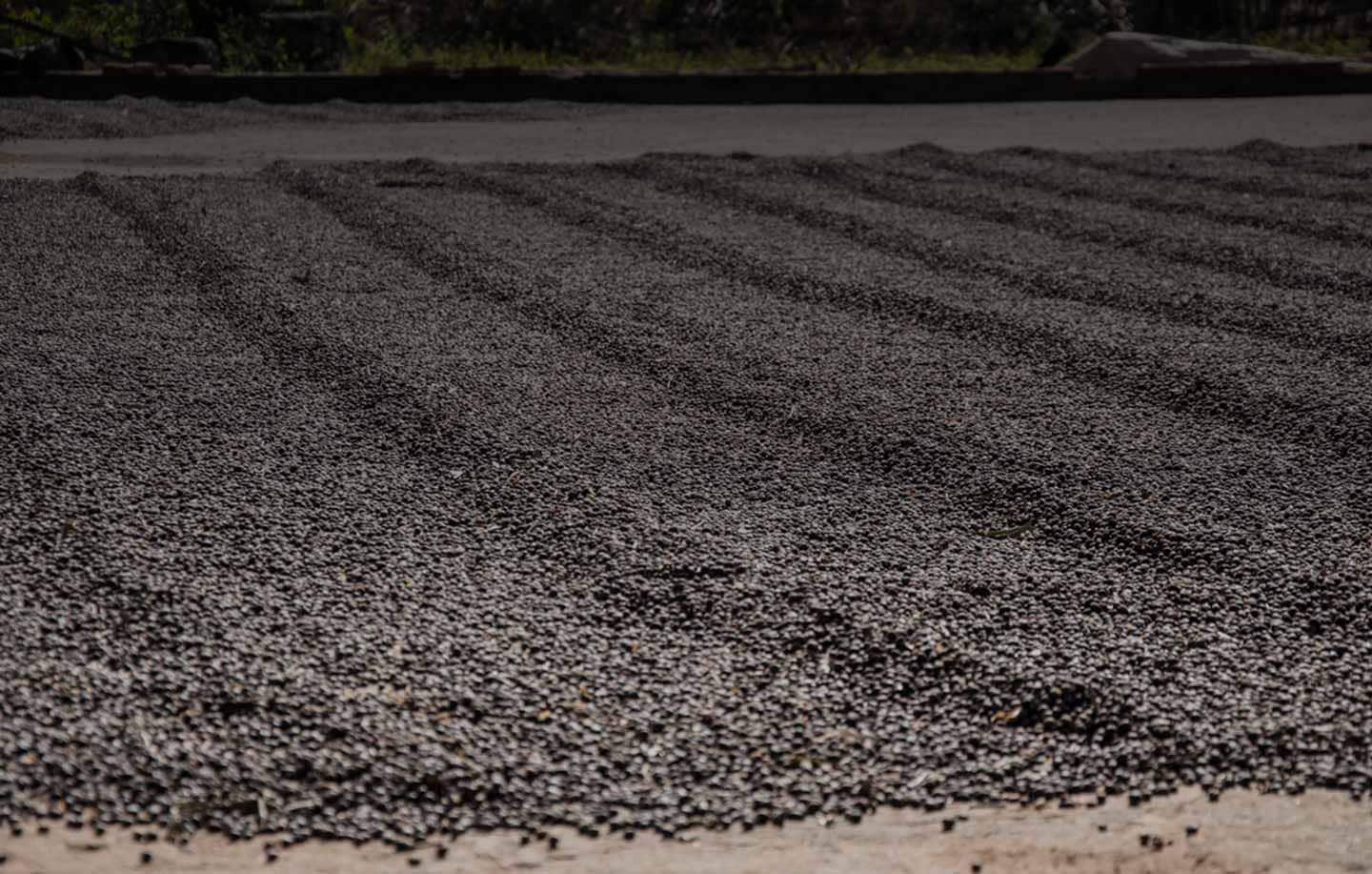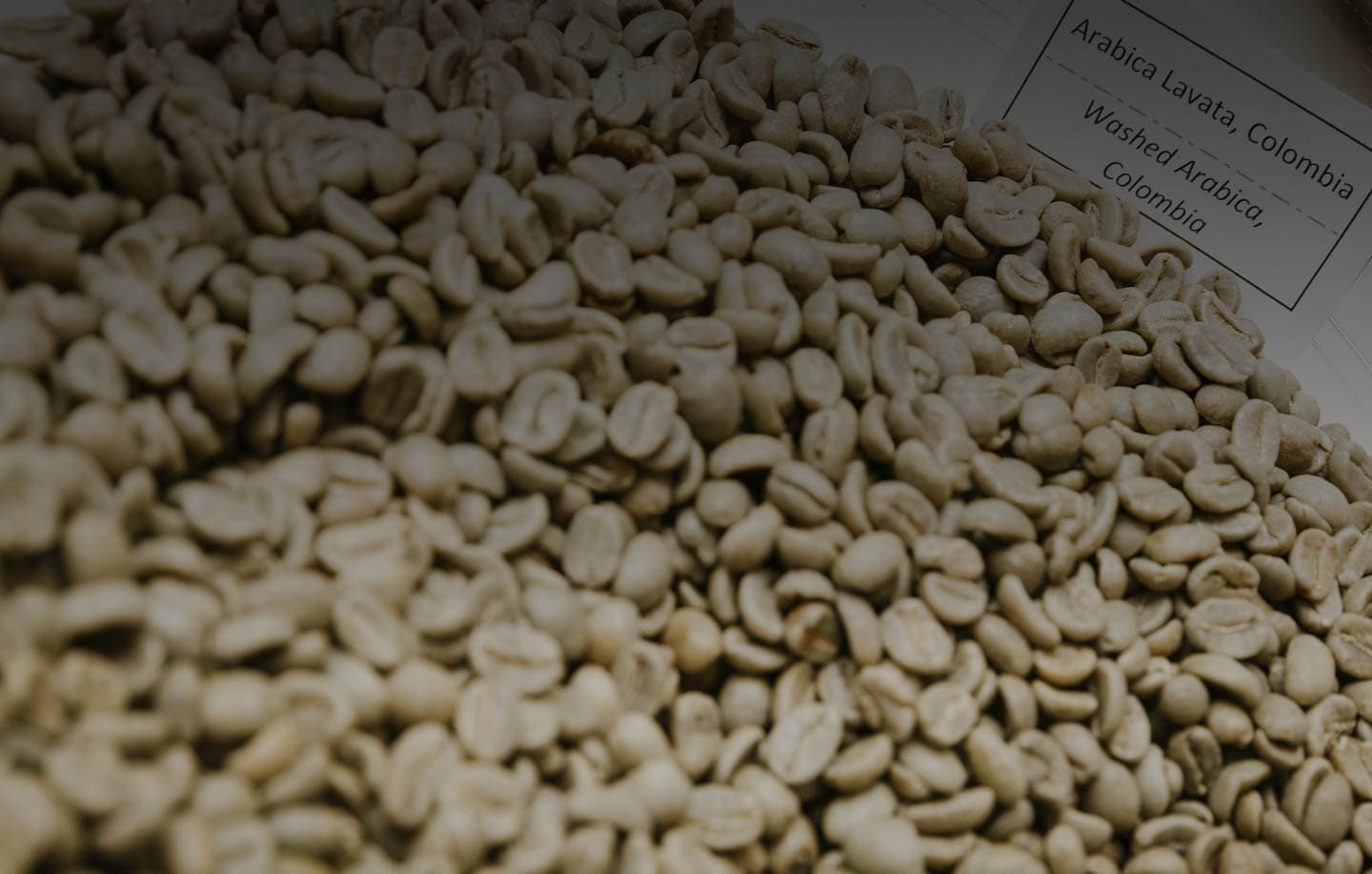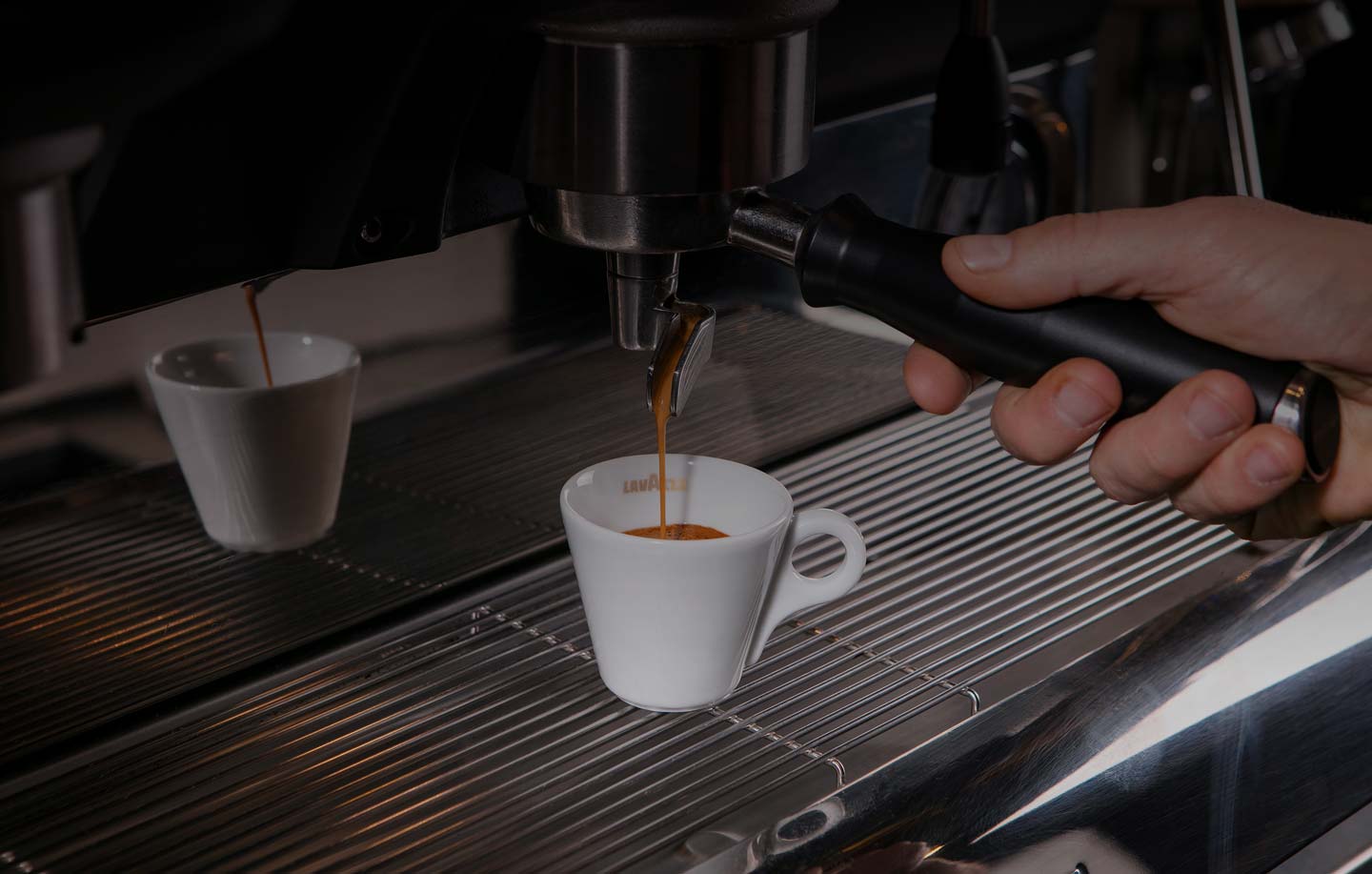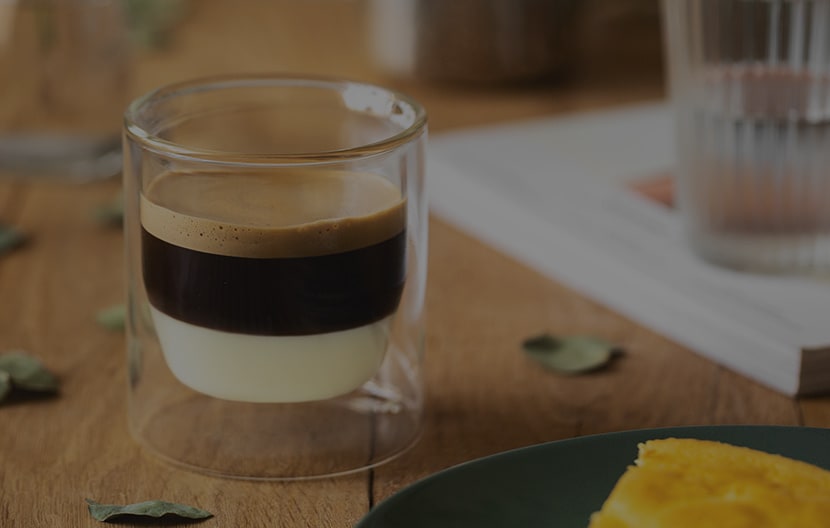*Lavazza is not affiliated with, endorsed or sponsored by Nespresso
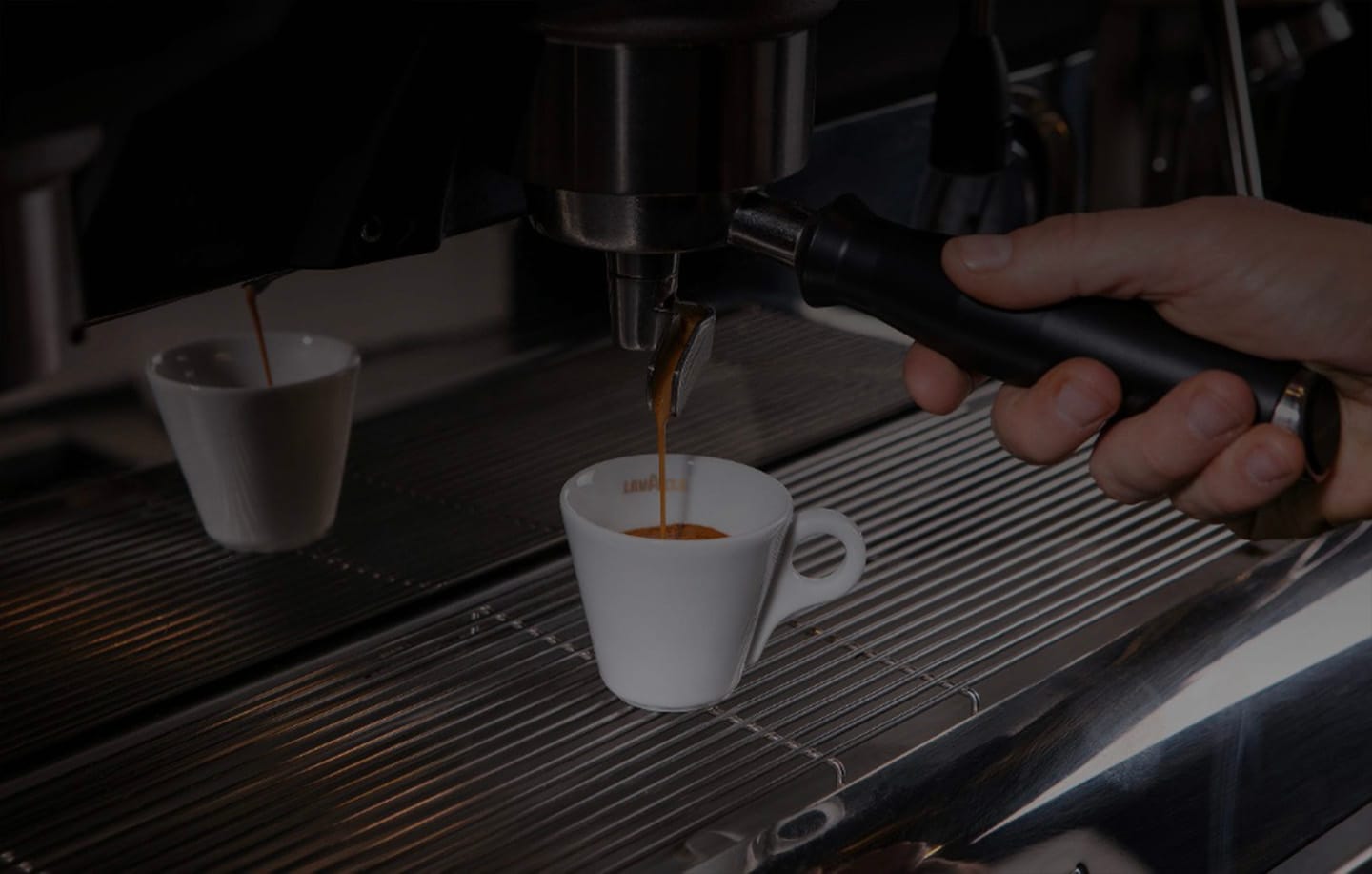
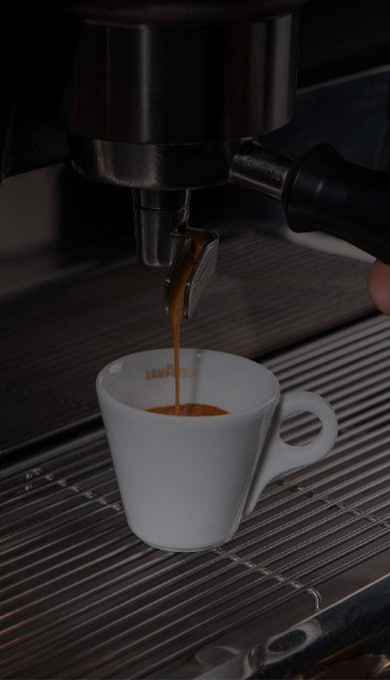
Espresso definition
As someone who enjoys coffee, you might have heard plenty about espresso. The most common knowledge is that it’s the base of the drinks you often buy in a coffee shop. However, have you ever wondered why it was called espresso? Why was it named espresso? How to taste espresso? There are a lot of mysteries behind our delicious cup of coffee, and today we’ll uncover exciting facts about the drink.
What Does Espresso Mean?
If you’re unfamiliar with how espresso machines work, let us tell you a bit about it first. To produce espresso, the machine must be capable of pulling hot water through the tight puck of the coffee ground. It needs significant pressure to optimise the coffee taste as quickly as possible.
It’s been working similarly since the first espresso machine was invented. Espresso was first introduced in Italy by Luigi Bezzera not long after espresso culture began spreading across Europe. Luigi Bezzera was one of the first coffee machine inventors who enhanced the first-ever patented espresso machine the hotel and cafè entrepreneur Angelo Moriondo in Torino, 1884.
What does espresso mean? Mr Moriondo had the need to prepare and serve coffee to his guest as fast as possible. Since his hotel was right in front the Turin Railway station, he adopted the term Espresso (like the fastest trains of the era) so to indicate the speed of its preparation. Quickly and "expressly" prepared on customer's demand.
More Coffee Glossary
- Americano: Beverage consisting of espresso and hot water with a ratio of 1:2.
- Barista: An Italian term to call a person operating an espresso machine and other coffee brewing equipment at a cafe or a coffee shop.
- Brew Time: How long it takes to brew an espresso shot. Espresso’s standard brewing time is between 25 to 30 seconds.
- Burr Grinder: The standard type of coffee beans grinder for making espressos.
- Caffe Latte: A beverage consisting of espresso and steamed milk.
- Cappuccino: A combination of espresso, steamed milk, and frothed milk with a 1:2:2 ratio.
- Crema: The light-brown foam floating on the top of brewed espresso. The layer usually tastes rich and creamy, made from the emulsified oils and the quick release of CO2 developed during roasting in the coffee beans.
- Demitasse: Typically used in France, a demitasse has a capacity of approximately 60–90 millilitres, half the size of a full coffee cup (the one used in north European countries). However, the Italian traditional Espresso is served in white China cup holding maximum 50 to 60 ml.
- Espresso: Brewed coffee beans with a professional Espresso machine. It’s a beverage made from seven grams of finely ground coffee and provides 30 to 45 ml of intense liquid.
- Froth: Thick layer of cream on top of steamed milk made by the frother on the espresso machine. When the frother hangs on the surface of the milk, it’ll produce thicker foam with a lot of bubbles which becomes a froth.
- Puck: The bed of pressed (or tamped) coffee grounds.
- Tamp: Tamp or tamping is when a barista presses the bed of loose ground coffee to brew an espresso.
Espresso Intensity
Each coffee bean has unique taste characteristics; testers or baristas often describe the element with intensity. What is the espresso intensity meaning? Intensity is an easy way to describe espresso's taste and aroma. Coffee intensity is commonly followed by the word ‘body.’
It might be hard to follow if you’re a beginner regarding espresso culture or how coffee tastes. Your subjectivity might affect how you describe the taste.
Intensity can be the way you describe how you perceive the taste you get from the espresso. Arabica or Robusta blends often guide our perception. Unlike Arabica with its sweeter and softer tones, in general Robusta will increase coffee intensity, so it's easier to judge. Still, several qualities, such as the espresso coffee origin and the varieties, can contribute to intensity. Not to mention, the type of roast your bean plays a part in how the espresso tastes.
Measuring Coffee Intensity
The packaging usually marks the intensity when you purchase espresso pods and blends from the market. It’ll often use a scale of five to 10, and sometimes 12, to describe the intensity you’ll get after brewing. This scale doesn’t connect to any standard and entirely relies on the coffee company’s judgement. Your taste buds might get a different taste compared to what the package tells you afterwards. It’s not uncommon for you to get different intensities when you purchase the same scaled beans from different companies.
Usually, if the package scales the bean under four, it has a light body and delicate aroma. Seven is for the middle ground. You can expect a more decadent aroma and a stronger taste, but not too strong. If you’re looking for a strong-bodied coffee, go for the 10.

